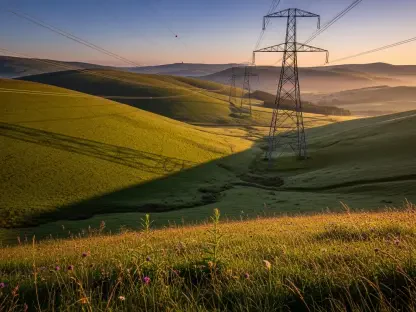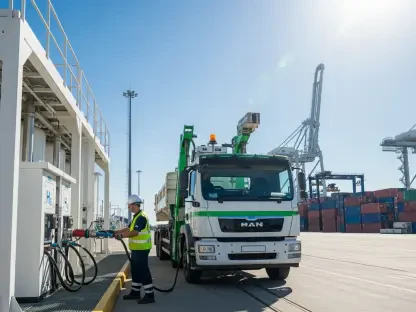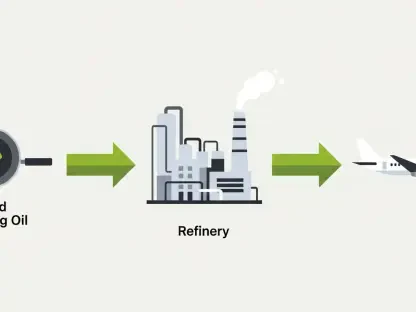Today, we interview Christopher Hailstone, an expert in energy management, renewable energy, and electricity delivery, providing valuable insights on grid reliability and security. As a trusted voice in the utilities sphere, Christopher brings a wealth of knowledge to the table as we discuss the county board’s decision against the proposed battery energy storage project near Glenville. His deep understanding will help us navigate the complexities of such projects and their implications for local communities.
Can you start by giving us an overview of the proposed battery energy storage project near Glenville?
The Midwater Energy Storage Project, proposed by Spearmint Energy, is a 150-megawatt battery energy storage system to be located south of Glenville. This project aims to store energy from various sources such as wind, solar, gas, and other carbon-based resources, thus providing electricity for approximately 100,000 households for up to four hours. The system is designed to enhance grid stability by taking surplus energy off the grid and storing it for future use, especially during peak demand times.
Why did the county board decide to vote against the Midwater Energy Storage Project?
The county board, after much deliberation and public commentary, voted against the project due to concerns about its impact on the local community, residents, wildlife, and the environment. Commissioners were particularly worried about the project’s proximity to the Shell Rock River and the Glenville-Emmons School, citing potential health and safety risks, and challenges for emergency response.
What specific concerns were raised by the commissioners who opposed the project?
Commissioners pointed to a variety of concerns, including potential fire risks, noise emissions, explosions, and hazardous material runoff. They highlighted the need for careful consideration of the project’s impact on water quality and recreational use along the Shell Rock River, a popular spot for kayaking, canoeing, and fishing.
Commissioner Shoff abstained from voting. What were his reasons for not taking a definitive stance?
Commissioner Shoff abstained because he felt that the board had not previously made blanket statements about projects reviewed by the Public Utilities Commission. He believed that, while the board should express concerns, it was premature to oppose the project outright without more comprehensive information and reassurances.
The project is proposed by Spearmint Energy. Can you tell us more about this company and their experience with similar projects?
Spearmint Energy, a Florida-based company, has considerable experience in developing energy storage solutions. They have worked on numerous projects across different states, ensuring compliance with stringent regulatory standards. Spearmint Energy’s portfolio includes several successful battery energy storage projects that help stabilize local power grids and integrate renewable energy sources.
Why was the location near Glenville chosen for this project?
Spearmint Energy selected the site south of Glenville because of its proximity to the ITC Midwest substation, which is crucial for efficiently injecting stored energy back into the grid. Additionally, the location allows for optimal use of existing infrastructure, making it technically and economically viable for the project.
Are there other viable locations that Spearmint Energy considered?
While other locations were considered, the proximity to the ITC Midwest substation made the Glenville site particularly attractive. However, alternate locations were suggested by the commissioners and residents who believe that there might be less contentious sites that could mitigate some of the raised concerns.
What are the specific concerns about the proximity of the project to the Shell Rock River and Glenville-Emmons School?
The proximity to the Shell Rock River raises worries about possible contamination to a DNR-designated state water trail, potentially affecting water quality and recreational activities. Similarly, given its closeness to the Glenville-Emmons School, there are heightened fears about safety and noise pollution affecting students and the school environment.
Can you explain the safety and environmental concerns that residents and commissioners have raised?
Residents and commissioners are concerned about potential fire hazards, explosions, and the release of toxic materials. Given that thermal events, though rare, can be severe, there is anxiety about the community’s ability to manage such emergencies effectively.
What are the potential risks associated with the battery energy storage system?
The primary risks include thermal runaway incidents that can cause fires and explosions, posing significant threats to nearby properties, wildlife, and residents. Such systems require rigorous safety protocols and technology to prevent and manage these risks.
How rare are thermal events in such systems, and what preventive measures are typically in place?
Thermal events are rare, but when they occur, they can be quite severe. Preventive measures include advanced monitoring systems, internal sensors, robust fire suppression systems, and strict adherence to safety standards to detect and address any issues before they escalate.
How does the battery energy storage system work in terms of storing and distributing energy?
The system works by storing excess energy produced by various sources such as wind, solar, or gas when demand is low, and then distributing it back to the grid during peak demand periods. This helps balance supply and demand, ensuring a more stable electrical grid.
What types of energy sources will the system draw from?
The system will draw from a mix of renewable energy sources like wind and solar, along with traditional carbon-based resources. This diversification ensures uninterrupted energy supply and enhances the overall reliability of the grid.
How much energy will the system be able to store and for how long?
The proposed system has the capacity to store enough energy to power approximately 100,000 households for up to four hours. This significant storage capacity can help in managing peak loads and maintaining grid stability.
What steps are being taken to address the concerns of the community and ensure the project’s safety?
To address community concerns, Spearmint Energy and the regulatory bodies are engaging in a comprehensive evaluation process. This includes detailed environmental assessments, public consultations, and stringent safety reviews to ensure that all potential risks are mitigated.
Can you explain the comprehensive evaluation by the Public Utilities Commission and what it entails?
The Public Utilities Commission’s evaluation process involves an in-depth environmental assessment that considers potential impacts on human health, wildlife, and the local environment. It includes public participation, allowing residents to voice their concerns and contribute to the decision-making process.
How is public input being incorporated into the assessment and decision-making process?
Public input is crucial and is being solicited through forums, public meetings, and comment periods. The Public Utilities Commission gathers this feedback and integrates it into their assessment, ensuring that the community’s voice is heard and addressed appropriately.
What are the potential benefits of the battery energy storage project for the Glenville community and the broader region?
The project promises several benefits, including enhanced grid stability, efficient use of renewable energy, and reduced dependency on fossil fuels. By storing surplus energy, the system ensures a reliable power supply and supports sustainable energy practices.
How can such a project stabilize the grid and support renewable energy sources?
By storing energy during periods of low demand and releasing it during peak times, the system ensures a more balanced and stable grid. This support for renewable sources helps in integrating intermittent energy sources like wind and solar into the grid more effectively.
What economic benefits might it bring to the area?
The project can create jobs during construction and operational phases, stimulate local economy through increased business activities, and potentially lower energy costs in the long term by enhancing grid efficiency and reliability.
Former Commissioner John Forman criticized the resolution as being negative towards green energy projects. What’s your response to his viewpoint?
It’s essential to balance the need for green energy with community safety and environmental considerations. While the criticism highlights the importance of green energy, the concerns raised by the community are valid and need to be addressed. Open dialogue and thorough evaluation can help find a beneficial path forward.
Employees of Good Steward Consulting spoke in favor of the project. What are their main arguments supporting the project?
Good Steward Consulting emphasized the grid stabilization benefits of the project, 24/7 monitoring systems, and the rare occurrence of thermal events. They also highlighted the rigorous permitting process and thorough evaluations, which aim to ensure safety and address misinformation.
How do they address the concerns raised by opposition voices?
They countered concerns by pointing to the comprehensive safety measures, advanced monitoring technology, and the project’s potential to make the county a leader in renewable energy solutions. They stressed relying on factual information and reputable sources rather than fear-based arguments.
What was the Shell Rock Township’s position on the project, and how does it influence the overall decision?
Shell Rock Township recently passed a resolution against placing the system at the proposed location. Their opposition underscores the local resistance and highlights the need for further considerations regarding the site selection and addressing community concerns effectively.
What is your forecast for this project?
The project’s future hinges on a balanced approach—addressing safety and environmental concerns while leveraging the significant benefits of energy storage. With thorough assessments, transparent communication, and community engagement, there’s potential for finding a mutually agreeable solution that supports both local interests and broader energy goals.









